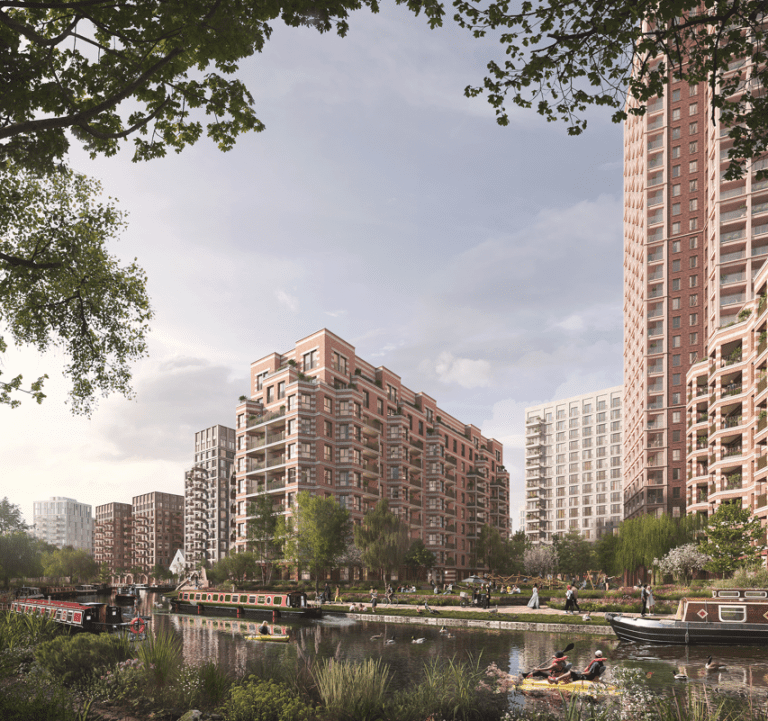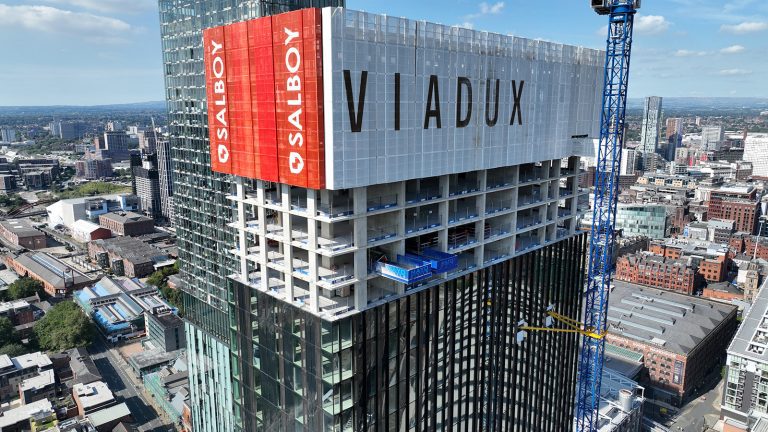Over 2,500 new homes, two parks, restored canal basin and high street proposed for the Royal Borough of Kensington and Chelsea on brownfield site Ballymore and Sainsbury’s have submitted a planning application for a major canalside neighbourhood in Ladbroke Grove. The proposed new neighbourhood has been designed to deliver 2,519 new homes, of which at least 500 will be affordable, plus two parks and a local high street with a reinstated, historic canal basin at its heart. Plans also include over 90,000 sq ft of high street shops, cafes and restaurants as well as a new Sainsbury’s Supermarket (130,000 sq ft) – with no day of trading to be lost between the transition from the current store to the new. The proposed neighbourhood would deliver much-needed new homes for London on a brownfield site already allocated for development by RBKC and the GLA / Mayor of London. The 19-acre site is one of the largest remaining brownfield sites in RBKC, and a large proportion of the site has been closed off to the public for over 40 years as a former gasworks site. In addition to the current Sainsbury’s Ladbroke Grove Supermarket, the site has most recently been occupied by industrial uses, including a scrap metal processing facility and commercial storage. Bordering the Grand Union Canal to the north and railway tracks to the south, the site is part of the Kensal Canalside Opportunity Area, identified in the Mayor’s London Plan. The masterplan, by FaulknerBrowns Architects, has been shaped over the last three years, in close consultation with the local community, local councillors, planning officers and the GLA, to create a place that meets the area’s current and future needs. These contributions have been invaluable in guiding the design process. The architectural approach takes its inspiration from local Regency and Victorian design, as well as its setting close to Kensal Green Cemetery, the Grand Union Canal and the wider area’s rich cultural mix. Two public parks and inclusive play spaces, designed by landscape architecture and design practice, Spacehub, form part of the proposals, as well as diverse natural habitats and interventions to support urban wildlife and biodiversity net gain. This includes grassland, woodland, wetland and canal basin habitats. In total, the neighbourhood will offer over 8.5 acres of high quality, publicly accessible open space. Situated around 15 minutes’ walk from four tube stations (Kensal Green, Kensal Rise, Ladbroke Grove and Westbourne Park), the plans encourage sustainable travel with new bus stops, pedestrian links and cycle routes and improved access to the canalside path. In response to Transport for London’s focus on active travel and pedestrian and cyclist safety as a priority, signalised junctions will be introduced on Ladbroke Grove and Kensal Road. A comprehensive sustainability strategy aims to maximise renewable generation and green infrastructure to produce zero emissions on site.. Heating and cooling will be provided by air source heat pumps and the development will feature solar panels and sustainable urban drainage systems. The scheme has been based on sustainable design and construction practices, adopting circular economy principles by considering the lifecycle of materials and minimising waste. John Mulryan, Group Managing Director, Ballymore, said: “Kensal Canalside is one of the last remaining major brownfield sites to be developed in London and the largest in the Royal Borough of Kensington and Chelsea. The scale and location of the site – in one of London’s 48 Opportunity Areas – presents a real opportunity to create a thoughtfully designed, accessible and sustainable canalside neighbourhood with strong transport links. “There are over 3,000 households on RBKC’s housing waiting list. Our proposals will make a positive and significant contribution towards reducing that figure. Kensal Canalside will provide a significant number of much-needed homes, plus a variety of retail spaces as well as open green spaces and a community leisure and amenity space that our residents and the local people can enjoy.” Patrick Dunne, Group Property and Procurement Director, Sainsbury’s, adds: “The development of the Kensal Canalside Opportunity Area will revitalise a key brownfield site in the Royal Borough of Kensington and Chelsea, delivering places for people to live, work, shop and relax, and providing a significant boost to the local economy. “The plans will allow us to deliver a brand-new, state-of-the-art Sainsbury’s supermarket for the local community to enjoy, and we’re proud that we are providing continuity to our customers by keeping our existing store open until the new one arrives. The larger, more modern and more spacious superstore will stock a wider range of our great value, high-quality food and non-food products and will build on our track record of offering fantastic service to our customers in Ladbroke Grove.” Ben Sykes, Partner at FaulknerBrowns Architects, said: “The masterplan is inspired by its characterful setting, where Ladbroke Grove meets the sweeping Grand Union Canal and the open space at Kensal Green. In response, our design has been built around public spaces, including a restored canal basin, play spaces and adding gardens and groves to the borough, to create a series of smaller neighbourhoods with a rich mix of uses and a strong sense of personality and place. “We are delighted to see the proposals submitted, after working with local residents, the local council, Ballymore, Sainsbury’s and the entire project team for almost four years, to research, design and develop the masterplan.” The development will create a minimum of 2,000 permanent long-term jobs and provide a significant boost to the local economy, amounting to approximately £37 million annually. The scheme will also deliver funding for social infrastructure within the local community such as healthcare and schools. The Notting Hill Carnival, which launches from the site, will be preserved as a close and long-term partner, and plans to create a new family friendly Carnival experience are being explored. If planning is successful, the 11-year construction programme is estimated to start in 2025. The first homes will be delivered in 2030, along with the new Sainsbury’s store and the neighbourhood centre around the restored canal basin. Building, Design & Construction Magazine | The Choice








